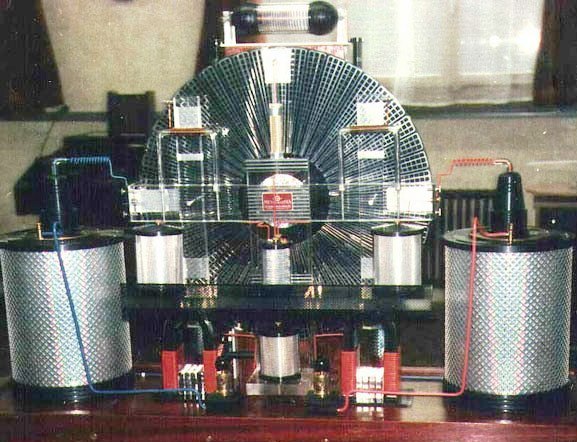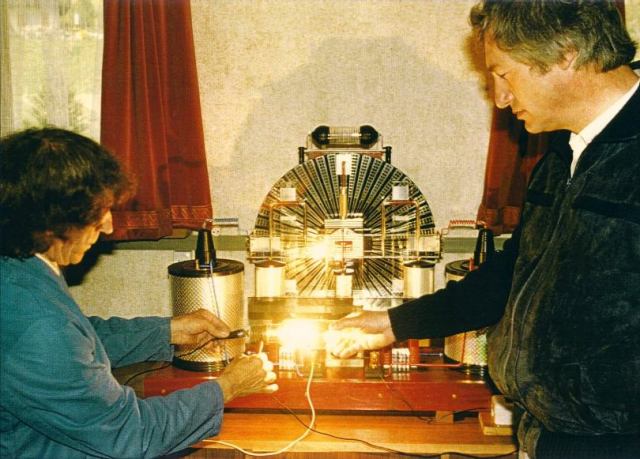Categories: Featured Articles » Controversial issues
Number of views: 3876
Comments on the article: 2
Electrostatic Generator Testatica
At the end of the twentieth century, the leader of the spiritual community of Methernita, Paul Baumann, developed a very unusual electric power generator, which was called “Testatika”.
The generator operated thanks to the high voltage generated by the modified Wimshurst machine, and served to convert static electricity received directly from the air surrounding the machine into direct voltage and current.
And although the concept of creating a machine was originally based on the idea of using as simple and affordable elements as possible in its design, generators of this type, with disks with a diameter of 50 to 200 cm, rated power up to 30 kW, have successfully provided all the needs of the community for electricity for the past more than three decades.
Instead of Leyden cans, similar to those that can be found in the designs of conventional Wimshurst electrophore machines, cylindrical capacitors of much smaller capacity, but with a much larger external surface area, are used here.
On some Testatika models, modified air filters from automobiles play the role of cylindrical condensers, which have the necessary vastness of the outer surface area, as well as the characteristic irregularities that are needed for the efficient collection of static electricity from the surrounding air.
High voltage is supplied from the disks, through the fixed electrodes, to the inner plates of a pair of cylindrical capacitors spaced far apart from each other in order to exclude direct interaction of their outer plates.

Fixed electrodes receiving a charge from the disk segments of a machine do not directly contact these segments. Large-area non-contact electrodes with a rough surface are used here, making only inductive interaction with segments sufficient.
Obviously, no significant current flows from the disks into the fixed electrode circuit, as in the Wimschurst generator, and only the electric charge induced on them and on the inner plates of the cylindrical capacitors is of decisive importance. This suggests that the load current is formed in another circuit, - in a circuit directly connected to the outer plates of a pair of capacitors, in which the load is connected.
In addition to the connected external load circuit, connected only with the outer plates of the cylindrical capacitors, in the design of the machine there are constantly connected inductive elements with horseshoe-shaped cores connected to additional capacitors in the closed drive circuit of the machine.
The drive electrodes are located in four places above and below, as in a conventional Wimshurst electrophore machine, in order to maintain the rotation of the disks even without load. These electrodes are connected to a drive circuit, which is powered by the same side electrodes as large cylindrical capacitors.
When the load is greater - the discs rotate faster, when the load is less - slower. This suggests that the faster the charges from the outer plates of large capacitors are utilized, the less they remain on the side electrodes, and the less braking (electrostatic repulsion) they have on the disks. At the same time, the drive chain, which has a relatively higher quality factor, does not experience the action of the load and continues to rotate the disks.

It is believed that in some Testatic machines there is an engine that drives the disks into rotation, but when examined in detail on any of the photos available on the network, it is impossible to detect the engine. And this is understandable, because the reversibility of an electrophore machine is a well-known, undeniable, scientific fact.
See also at e.imadeself.com
:
